Last updated on June 3rd, 2023
There are more than 60 types of deer worldwide, which exist on every continent besides Antarctica. And deer can live anywhere in a variety of habitats. Deer are able to live in mountainous areas and even warm or wet rain forests. The red Barbary Deer is the only type of species present in the country of Africa.
Interesting facts about deer
1. Deer have a maximum life span of 20 Years
They can live up to 20 years of age depending on the environment; and although Deer have the potential, it’s unlikely they do.
2. A female deer is called a Doe
We do know that the male deer are called bucks, while baby deer are called fawns, and the female deer is called a Doe.
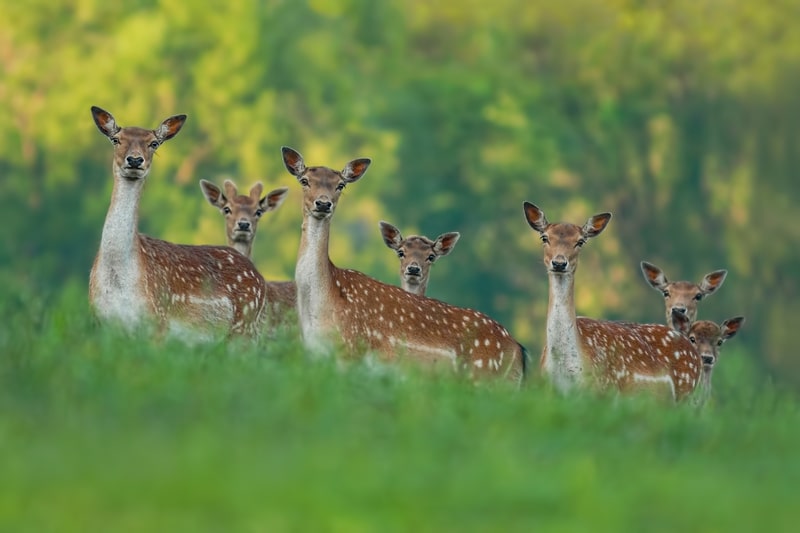
3. Deer have a phenomenal sense of smell
Their sense of smell is remarkable. Yes, it’s true! If you’ve ever noted how skittish deer are, especially if you have to get even within a distance of half a mile of them, deer will either smell you or hear you.
4. The quickest living and growing tissue in this world
They are the only group of animals with antlers, and antlers are the quickest living and growing tissue in this world. One of our favourite deer facts.
5. The only deer species not to have antlers
Did you know that the Chinese water deer (male) are the only deer species not to have antlers? However, they are gifted with long, curved, and sharp upper canine teeth that protrude from the mouth.
6. Deer antlers have furry coats called velvet
Their furry coat is called velvet, although it isn’t the same type of velvet used in our fabrics! It’s really smooth and facilitates the process of deer growing into their antlers.
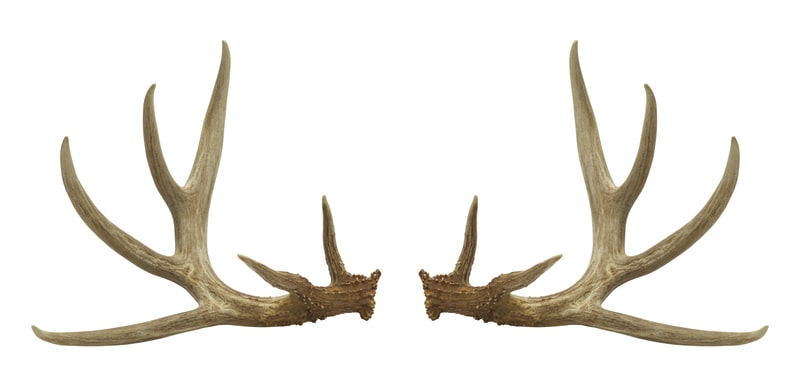
7. Their antlers are living organs
Antlers are organs, and the larger the antlers are, the healthier they are. In September, deer antlers begin to grow back since it’s their mating season.
8. Deer antlers
It is interesting to note that compared to their body size, reindeer have the largest and heaviest antlers of all living deer species. The length of a male’s antlers can be up to 51 inches while that of a female’s can be up to 20 inches.
9. Deer antlers expand an inch every two days
Deer antlers can grow up to an inch every two days and are the fastest-growing tissue on planet earth.
10. Deer are genuine athletes
From jumping to swimming and running like champions, deer have strong, long legs ideal for running, as we mentioned earlier.
11. Deer can’t see neon orange colors
They can’t see the color because deer have only two tones of color in their eyes. Hunters usually go for the color neon orange because it can camouflage them from the deer.
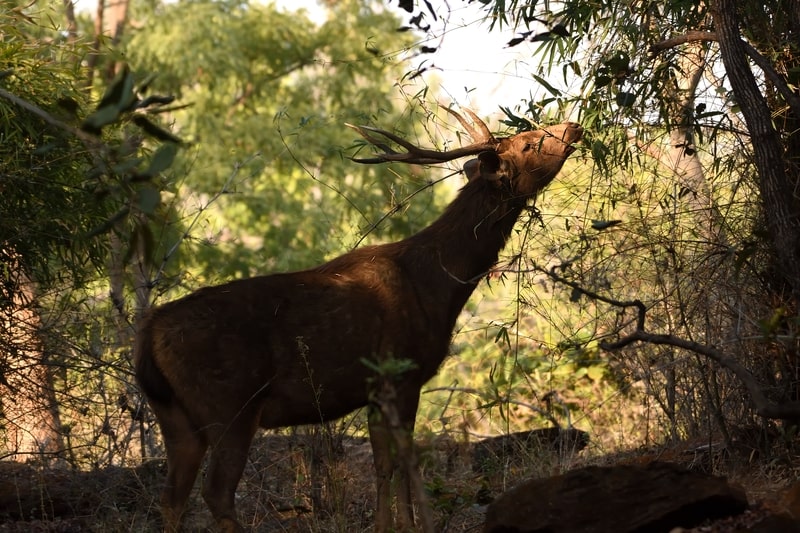
12. They are Herbivores
Deer are herbivores. Basically, they feed on grass, plants, twigs, weeds, nuts, fruits, acorns, seeds, and mushrooms, and can eat up to 4 pounds of food each day.
13. Fawns are born without a sense of smell
Another fact is that a baby deer, in other words, a fawn, is born without a sense of smell; and it makes it very difficult for other animals to detect them.
14. A Fawn is born with white spots
Baby Fawns are born with some white spots throughout their bodies, which are noticeable and can’t be missed.
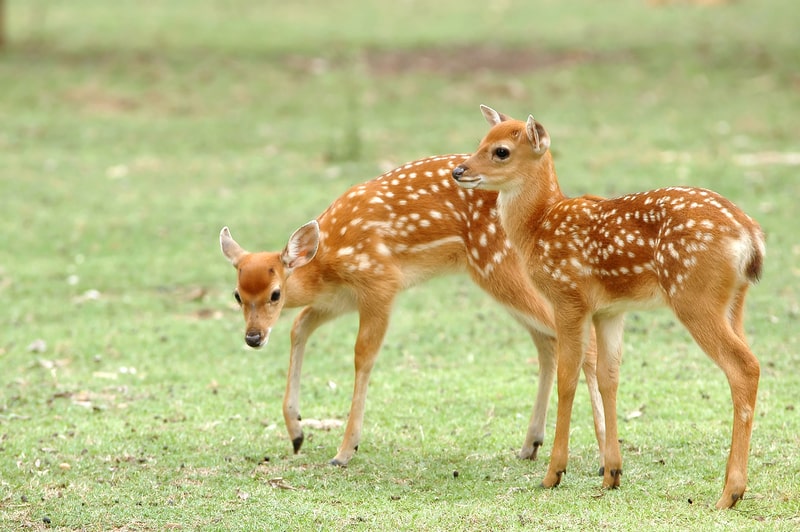
15. Fawns walk within a few minutes after they are born
They eventually develop the ability to walk and stand just after a few minutes of birth, although they live with their mothers for about 1-2 years after being born.
16. Momma deer eats the baby’s feces
The mother of the baby fawn deer actually eats the feces, making sure that there isn’t any scent left, which is very hard to detect thereafter. Among several deer facts this shows how caring deer mother are.
17. Deer have a 310-degree vision
Come to think of it, they actually have superior vision. Their eyes are on the side of their heads and this gives them excellent vision. Their eyesight is five times better than humans. With two eyes, humans can see nearly 180 degrees.
18. Deer can even jump up to 10 feet above
They make amazing gymnasts as well. Deer can jump about 10 feet high above in the air; oftentimes, they can make their way past fences quick and easy, with their strong and muscular legs.
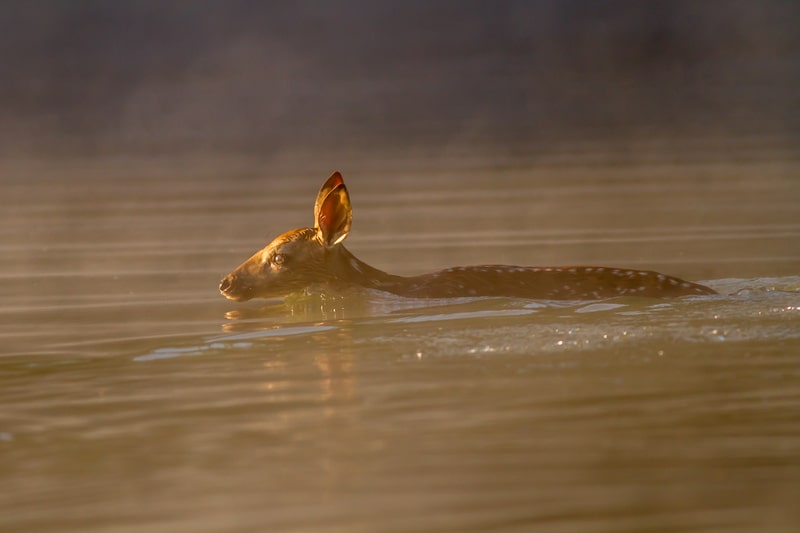
19. Deer are great swimmers
They can also swim up to speeds of 13 miles per hour. This is because their bodies are ideal for water thanks to their strong legs, hooves, and toes. This is one of the deer facts that you can share with your friends and family.
20. Deer are adorable to look at
They are very quiet animals, that grunt and snort. But are extremely cute. Their ears, eyes, and antlers add to their cuteness.
21. A reindeer can weigh up to 396.82 lb
A reindeer can weigh around about 396.82 lb or (180 kg). Mule deer weighs between 121-330 lb (55-150kg), and last is the White-tailed Deer which can weigh at least 99.20-149 lb (45-68 kg).
22. The only domestic deer
The reindeer is the only domestic deer.
23. The white-tailed deer
The white-tailed deer is the most abundant deer in the United States, though they aren’t found in California, Nevada, Utah, Alaska and Hawaii.
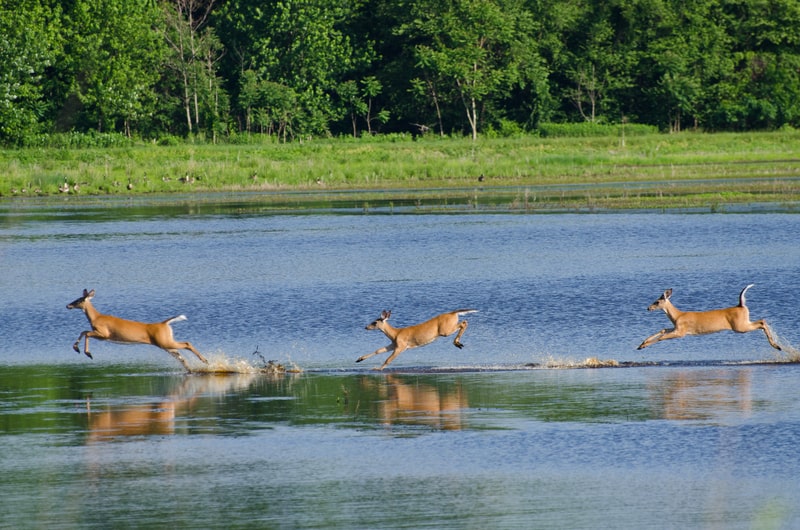
24. There are about 30 million deer worldwide
However, deer population is decreasing due to predators and illegal hunting around continents.
25. They are ruminant mammals
Deer are formed of the Cervidae family belonging to the ruminant type of mammals and class of Mammalia.
26. Male Deer reach maturity stage in their fifth year
Male deer normally reach their maturity stage in their fifth year. Dominance is established by the size of their antlers and their bodies.
27. They don’t have specific habitats and adapt where necessary
Their habitats are not specific, meaning they can easily adapt to any environment they live in.
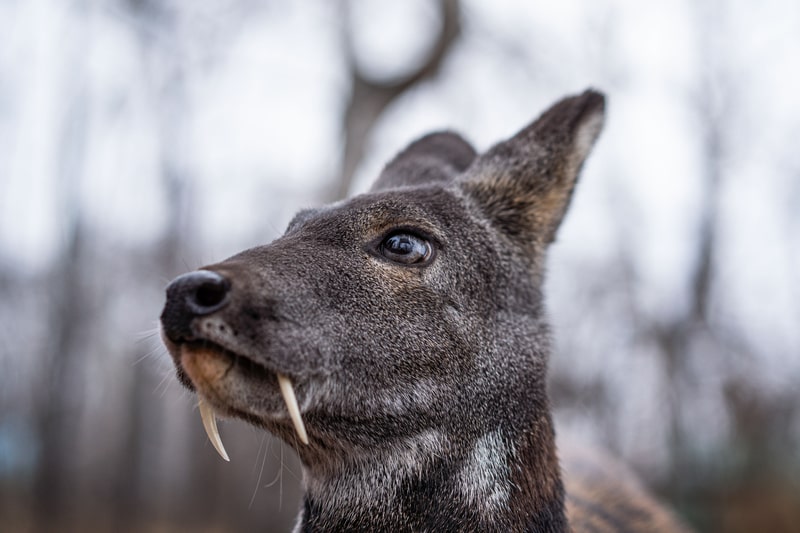
28. Deer have fangs
A species of deer has fangs called the water deer, which is native to Korea and China.
29. Finland paints their deer antlers
Finland is known for painting their reindeer antlers using reflective paint to avoid deer-car collisions.
30. Deer also eat baby birds
Researchers worldwide have caught them on film-eating birds, actually eating baby birds straight out of their nest.
31. The smallest North American Deer
They are called Key Deer, which is known as an endangered species of deer that lives in the Florida Keys.
32. Deer are both monogamous and polygamous
For most species, the breeding season is short; therefore, they also tend to display different characteristics. For example, a number of males may come together to protect a female group, also known as a harem. Alternatively, a male may have a territory that consists of one or more females. In other instances, male deer make the journey to other herds in search of mates.
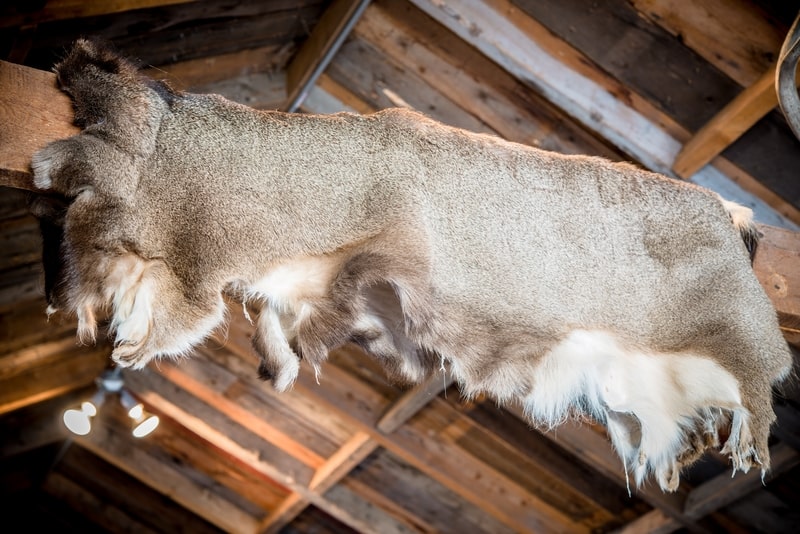
33. Deerskin or whole Deer used them for currency
Dollars are referred to as bucks only because they used them for currency in the 18th and 19th centuries.
34. The pudu deer
Is one of the smallest types of deer, measuring only 32 cm tall.
35. Female deer are pregnant for between 180 to 240 days
A female deer remains pregnant for between 180 to 240 days. Additionally, they only give birth to one or two young at a time. If a female deer gives birth to more than two fawns, it’s rare.
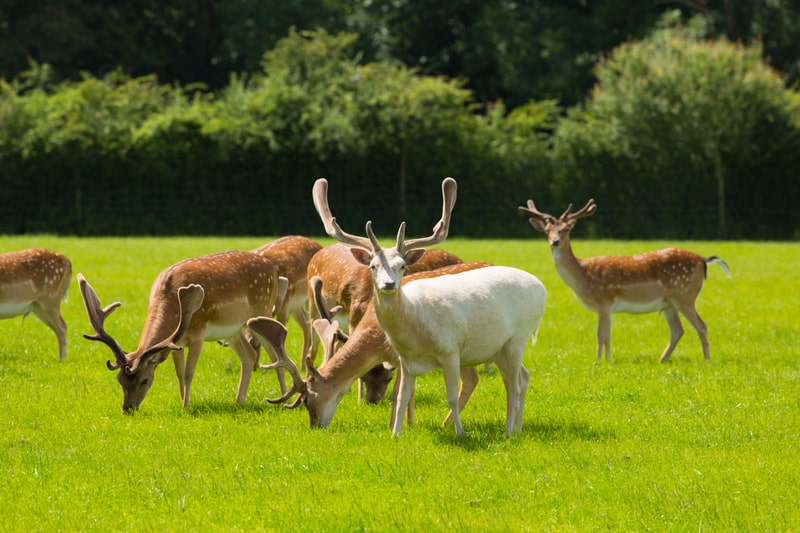
36. Only one in every 30,000 deer is white
One in 30,000 deer are born with white fur. They are born in a solid white color having a pink nose, pink hooves, and even pink eyes. Additionally, lots of people incorrectly identify these solid white piebald deer as albinos. Another amazing deer fact.
37. Deer are social animals
It is not uncommon to see deer walking in groups called herds. In some cases, there’s a dominant male leader, and in other cases, they walk in sexes. Additionally, male herds tend to watch over female herds. In some cases, the herds could have up to 100 members.
38. Red Deer produces cervelt
Which is found in New Zealand, known for this unique type of fiber called Cervelt and is extremely soft, even way softer than cashmere. Twenty grams of fiber is collected yearly from each Deer, Basically for making luxury socks worth $1,500 per pair.
39. Deer do not store food for the winter season
Deer use their hooves to discover moss and leaves, especially if the snow isn’t too deep.
40. The Indian Hog Deer
This deer species is native to India. It has its name from rolling gait and short legs, although they look like wild hogs.
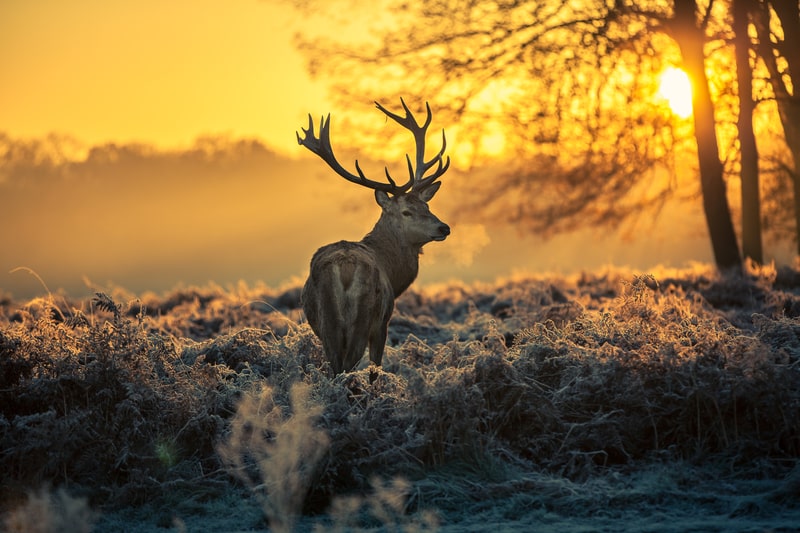
41. Pregnant Deer can abort a fetus if malnourished
When a pregnant deer suffers from malnutrition, it can absorb and abort the fetus using its natural ability.
42. The largest Deer grew to 7 ft only at the shoulders
Did you know that the Irish Elk, was the largest deer species ever, that stood up to seven feet at the shoulder, with antlers spanning up to 12 feet?
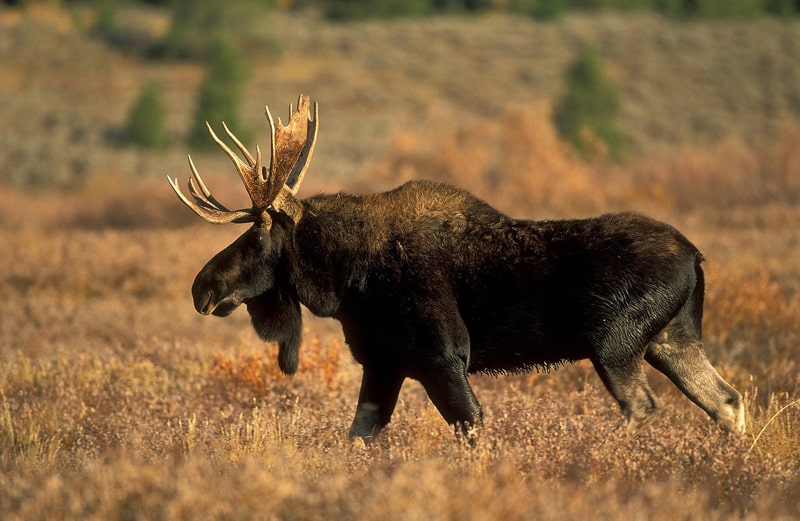
43. The largest deer
The largest deer is the moose (referred to as elk in Europe) which can grow up to 6.5 feet tall and weigh around 820 kg.
44. The smallest deer species on Earth
Did you know that the Pudus are the smallest deer species on Earth? When fully grown the Southern Pudu weighs 9 kg and gets to be only 14 inches tall. The Northern Pudu is slightly smaller than the Southern Pudu and is a native of the Andes mountains in Colombia, Ecuador, and Peru.
45. Preys on Deer
These animals are known to prey on Deer, Coyotes, Bobcats, and mountain lions.
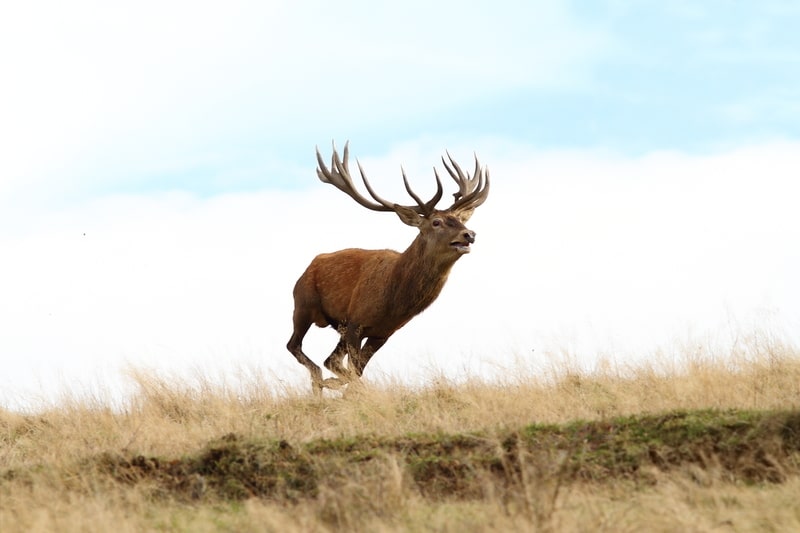
46. Deers are quick to escape predators
Their ability to run up to 30 miles an hour is an advantage for them to escape.
47. The only female deer species that grow antlers
The caribou is the only member of the deer family where both males and females grow antlers. Or we can say that they are the only deer (female) species that grow antlers.
48. Variety of meals that deer eat
They enjoy various meals from anything, including agricultural crops, soft/hard mast seeds, grass and mushrooms, and even lichens.
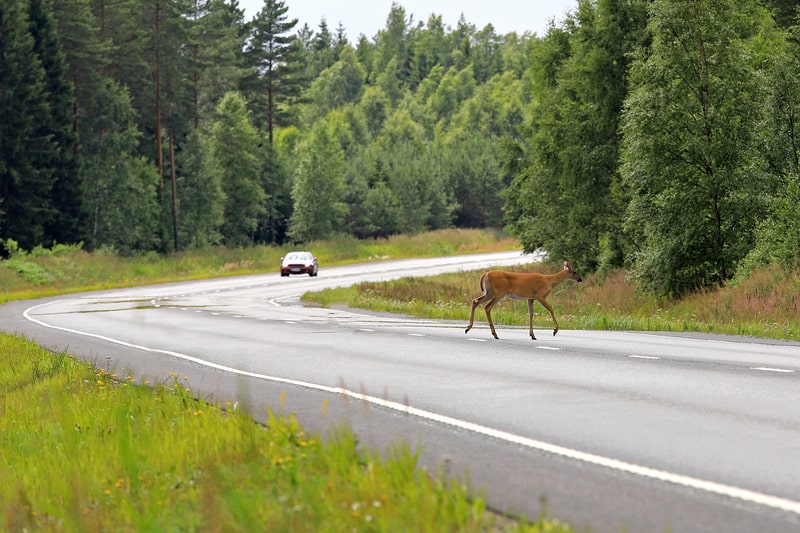
49. In South Carolina, deer-vehicle collisions are frequent
Because of high population of deer in South Carolina, deer-vehicle collisions are frequent. It has also been noticed that most of these collisions occur near dawn and dusk because deer as well as human movement is at its peak during these times. If a deer is hit by a vehicle, the driver can keep the deer for consumption as long as an incident report demonstrates that the deer was killed in an accident and not illegally shot.
50. Trees can defend themselves against being eaten by deer
Did you know that some trees have built in mechanism to defend themselves against being eaten by deer? Tree saplings do this by increasing the production of hormones that deter the predator away. The plant starts producing tannins which makes the tree bitter and thus less appetizing for the deer.
. . . continue reading on the next page
